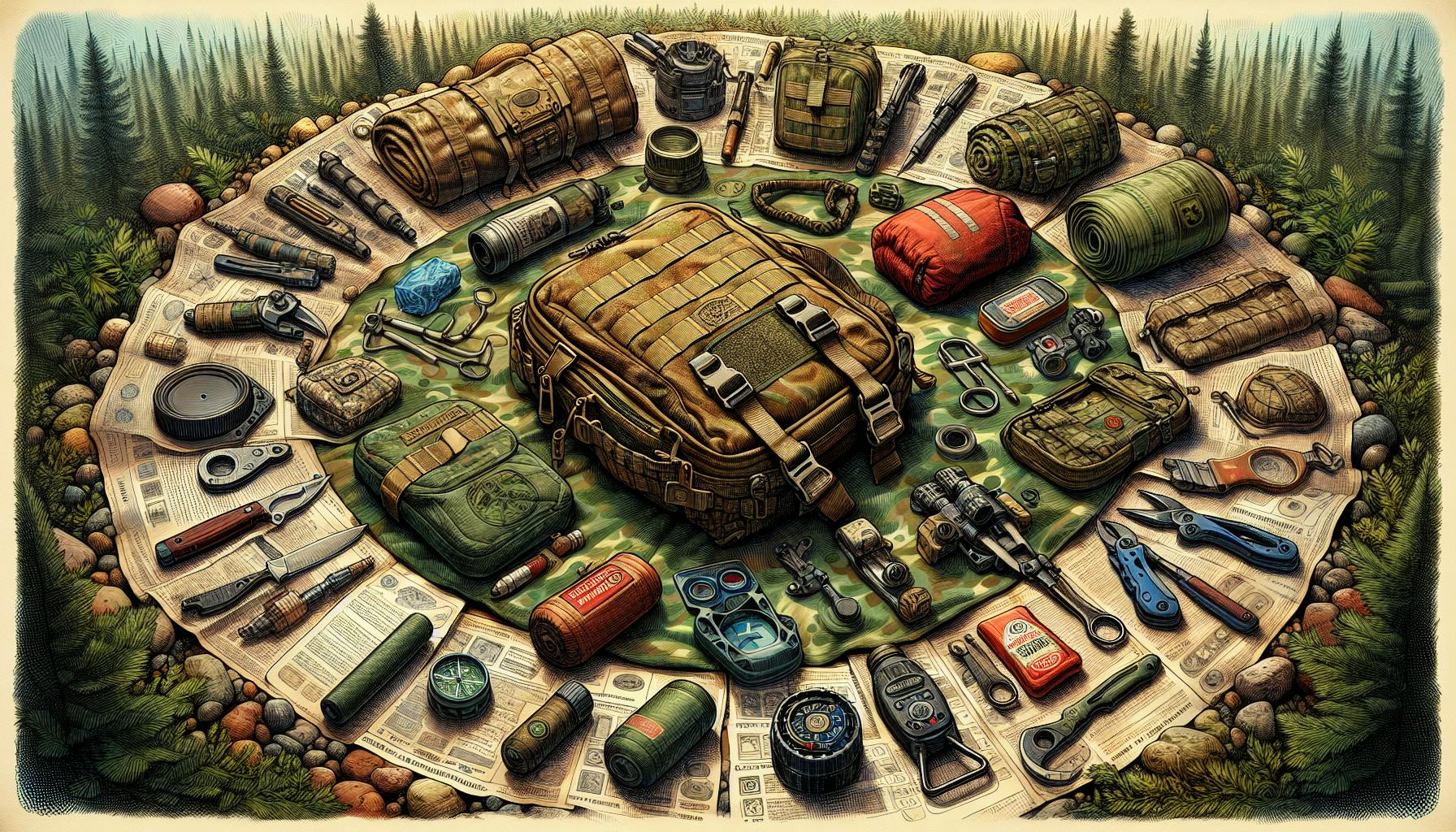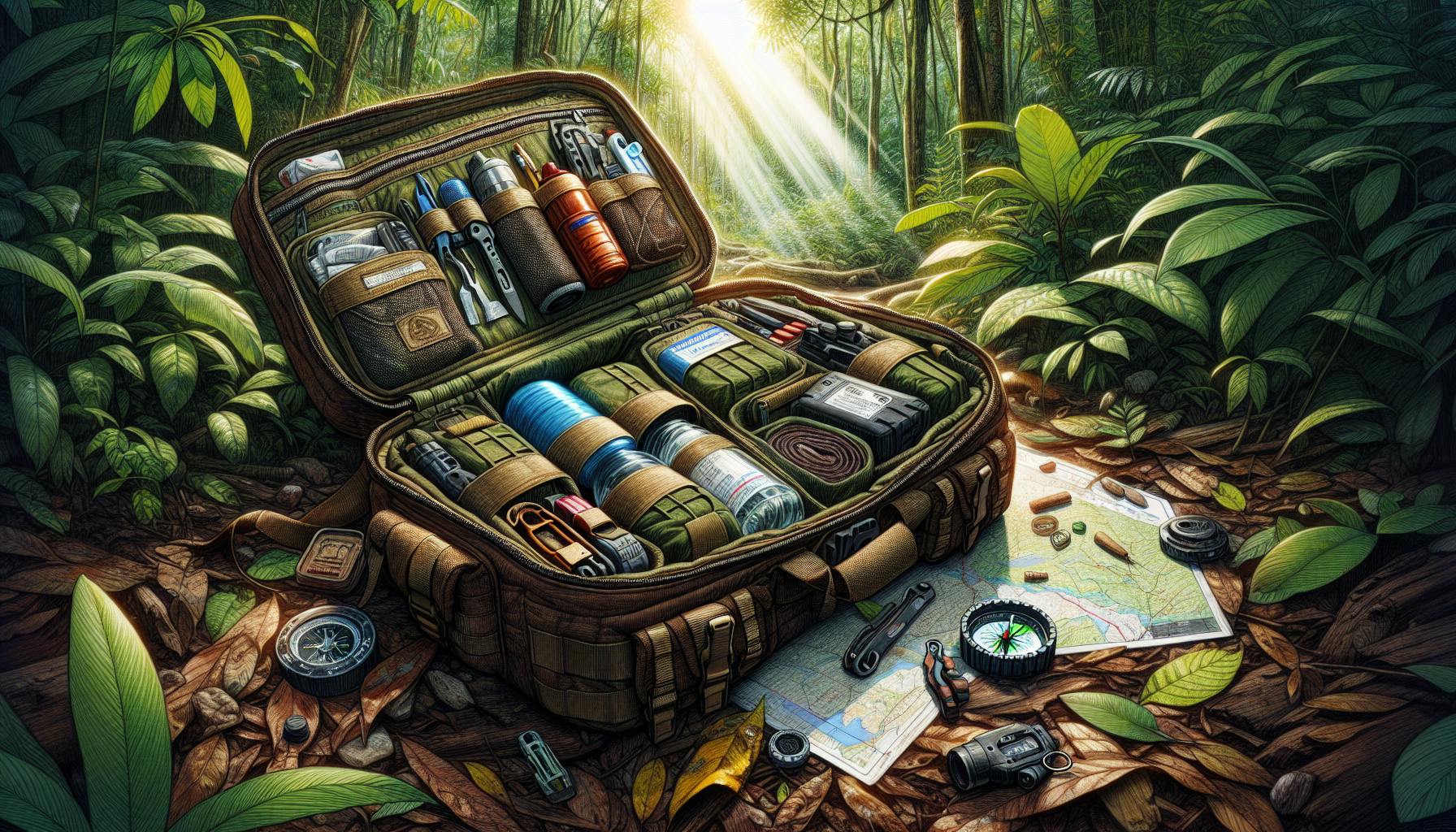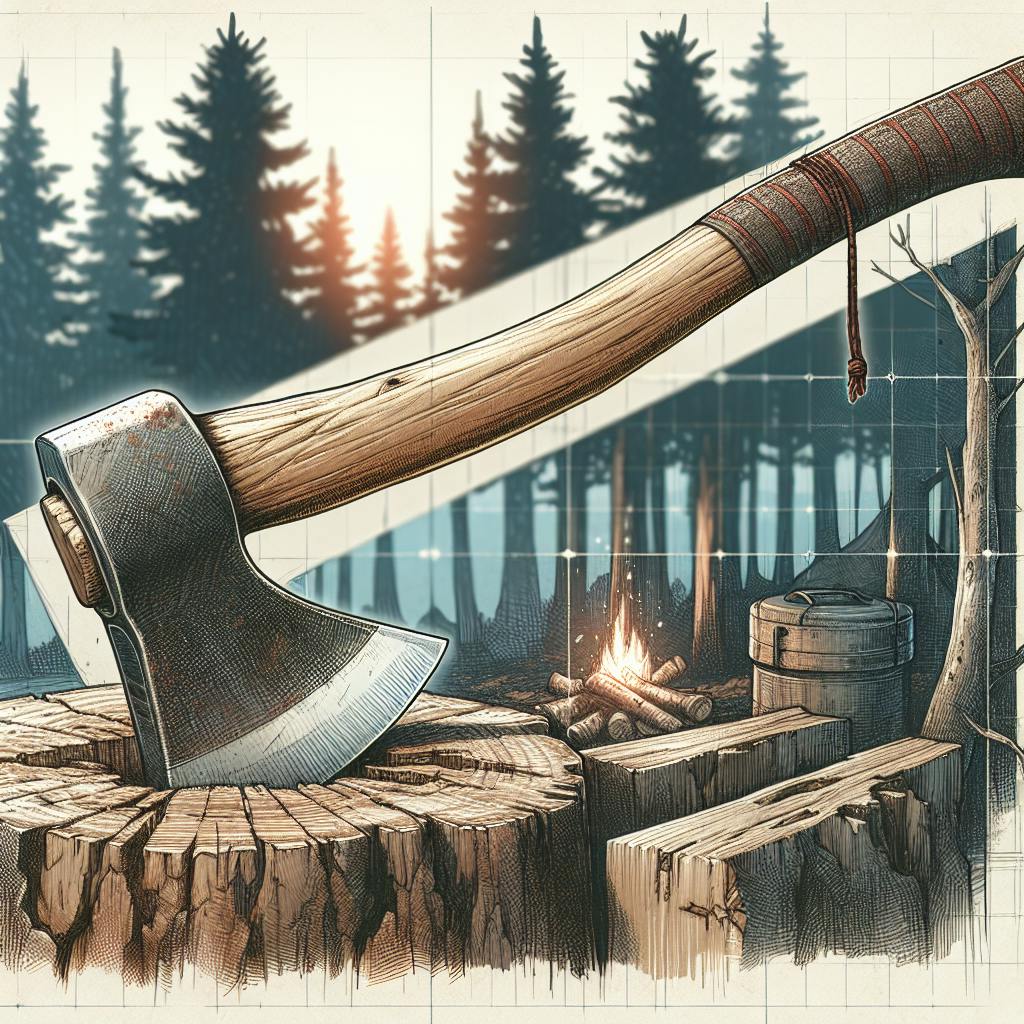Most newcomers to prepping would agree that building an emergency food supply can be overwhelming.
By following a comprehensive prepper food storage list, even beginners can assemble a robust long-term food supply.
In this guide, you'll discover the essential items for your prepper pantry, techniques to maximize shelf life, and how to efficiently organize your stockpile.
Introduction to Prepper Food Storage Fundamentals
Prepping refers to preparing for emergencies by stockpiling essential supplies. A well-planned food storage is a critical part of emergency preparedness. Having an adequate food supply ensures access to nutrients during crises and builds self-reliance.
Understanding the Prepper Food Storage List
A prepper food storage list outlines the ideal items to stockpile for emergency nutritional needs. This includes non-perishable foods with a long shelf life such as canned goods, grains, legumes, dried fruits and vegetables. The list covers essential macro and micronutrients, catering to caloric as well as vitamin and mineral requirements. Tailoring the list to your household's needs in terms of calories, allergies and preferences is key.
Advantages of a Well-Planned Food Supply
Stockpiling enough food reserves offers numerous benefits:
- Ensures a steady supply of nutrients if stores run out during disasters
- Avoids malnutrition as shelf-stable foods can provide balanced nutrition
- Promotes self-sufficiency and independence for your household
- Canned goods and dehydrated foods have longevity, reducing waste
- Provides peace of mind knowing you have reserves to rely on
Proper planning is vital - calculating daily caloric needs and nutritional variety while also considering shelf life, storage conditions and budget.
Initial Steps to Organizing Your Prepper Pantry
When starting out, focus on:
- Storage conditions like cool, dry and dark spaces to extend shelf life
- Best by dates - use up existing household items first
- Buying smaller units to test options before investing in bulk
- Labeling containers with contents and dates for easy inventory
- Rotating stock using the FIFO (first-in, first-out) principle
Start small, learn proper techniques like sealing containers, then scale up. Keep an organized prepper pantry list updated as you build your reserves.
What foods should I stockpile for prepping?
When building your prepper food storage, focus on shelf-stable items that provide protein, fruits/vegetables, grains, and fluids. Here are some of the most essential foods to stockpile:
Proteins
Canned meats like chicken, tuna, salmon, and beef stew are nutritious and last 2-5 years. Canned beans, chili, and soups also provide protein. Powdered milk, eggs, and whey protein are other good options. Aim for at least 15-20 cans per person.
Fruits and Vegetables
Canned fruits and vegetables, as well as dried options, give you your vitamin intake. Focus on nutritious veggies like carrots, spinach, tomatoes, and beans. Stock up on at least 20-30 cans per person.
Grains/Carbs
Rice, pasta, oats, flour, and crackers offer carbs for energy. Look for whole grains when possible. Make sure to store at least 15-20 pounds per person.
Fluids
Bottled water and shelf-stable drinks like juice boxes provide hydration. Calculate to have at least 1 gallon per person daily. Water storage containers also work.
Rotate your stock every 6 months, using first-in-first-out. Track quantities with a prepper food storage list noting expiration dates. Start small and build up over time. With the essentials covered, you'll be prepared in an emergency.
What is the best foods to store for doomsday?
When building your prepper food storage, focus on shelf-stable items that provide nutrition and calories. Some good options to stock up on include:
- Canned goods: Fruits, vegetables, beans, meats, and seafood canned in water or juice can last 2-5 years unopened. Canned soups, broths, and tomato products are also handy for cooking.
- Grains: Whole grains like rice, quinoa, oats, and pasta have long shelf lives and are versatile ingredients. Look for products packed in oxygen-free packaging.
- Fats and oils: Coconut, olive, and vegetable oils store well. Stock up on nut butters too.
- Dried foods: Dried beans, lentils, milk powder, and freeze-dried produce provide protein and nutrients.
- Comfort foods: Include some favorite snacks and meal ingredients to boost morale. Honey, sugar, dried spices, coffee, and chocolate can make meals more enjoyable.
When building your prepper food storage list, focus on nutrient density, shelf life, and versatility. Create a diverse stockpile that combines long-lasting staples with foods you already eat and enjoy. Maintaining high morale is just as important as physical survival.
What food is good for long-term storage survival?
Rice, beans, pasta, and cereals are excellent long-term storage foods for preppers. Here are some of the best options to include in your food supply:
Rice
- White rice can be stored for up to 30 years if properly packaged and stored in a cool, dark place. Brown rice has a shorter shelf life around 6 months.
- Rice is versatile, nutritious, and easy to prepare. Stock up on bags of rice in different varieties.
Beans
- Dried beans like black beans, kidney beans, chickpeas, and lentils can last up to 30 years when stored properly.
- Beans are packed with protein and fiber. Stock a variety of beans to add nutrition and flair to meals.
Pasta
- Dried pasta can last up to 30 years when stored in airtight containers. Opt for whole grain varieties.
- Pasta is tasty, filling and a versatile base for many easy meals. Stock up on pasta and pasta sauce mixes.
Ready-to-eat Cereals
- Cereals like oats, corn flakes, muesli and granola can last up to a year when stored in airtight containers.
- Keep a variety of cereals for quick breakfasts and snacks.
Other good long-term food storage options include canned goods, dried fruits, nuts, crackers, bouillon cubes, and more. Ensure proper storage and rotation of stock. Variety is key!
sbb-itb-b932644
How much food should I store for prepping?
When starting your prepper food storage, a good rule of thumb is to have at least one week's worth of non-perishable food stored somewhere cool and dry in your home. This can be normal canned and dried foods that you would eat every day.
Here are some tips for beginners on how much food to store:
- Start small - Begin with 3-7 days' worth of food before scaling up. This allows you to test your storage methods without overcommitting.
- Focus on calories - Prioritize high-calorie, nutritious foods like beans, grains, nuts, peanut butter, and cooking oil. Each person needs ~2,000 calories per day.
- Store what you eat - Stockpile regular shelf-stable groceries from the supermarket to remove the stress of rotating supplies.
- Allow for variety - Have a mix of proteins, fruits, vegetables, and snacks to maintain morale.
When first starting out, use a basic prepper food storage calculator to determine ideal quantities based on your household size. Most experts recommend having at least one month's supply, though many preppers work towards a 1-year stockpile.
The key is starting small and building up your food reserves over time. Maintain an organized prepper pantry and take inventory every 6 months, using a printable food storage list as a guide. This ensures nothing expires or gets overlooked.
With a well-managed, sufficiently stocked prepper food supply, you'll have reliable access to nutrition if an emergency disrupts normal purchasing channels.
Building the Best Prepper Food Storage List
As a prepper, having a well-stocked food supply is essential for emergency preparedness. When building your food storage, there are a few key things to consider:
Determining Your Best Food Storage Items
- Calculate your household's daily calorie needs and nutritional requirements. This will help you determine the type and quantity of food you need.
- Estimate how long you want to be prepared for - 3 months? 6 months? 1 year? This will dictate the total amount of food you need to stockpile.
- Take into account dietary restrictions, food allergies, and preferences. Focus on shelf-stable foods your household will actually eat.
- Prioritize nutrient-dense, non-perishable foods like rice, beans, canned meat/fish, nuts, dried fruit, and vegetables.
The Essential Prepper Food Supply Checklist
Here are some of the most recommended foods to include in your prepper pantry:
- Rice - White, brown, wild - Long-lasting source of carbs.
- Beans and legumes - Canned or dried - Excellent source of plant-based protein.
- Canned meats - Choose pre-cooked varieties like tuna, chicken, salmon.
- Nuts and trail mixes - High in protein and healthy fats. Go for sealed bags.
- Dried fruits - Packed with vitamins and minerals. Store in cool area.
- Canned vegetables - Go for low sodium options.
- Whole grains - Rolled oats, quinoa, barley. Provides fiber.
- Comfort foods - Boost morale with coffee, tea, honey, spices, chocolate.
Focus on foods that provide macros, vitamins, minerals and have a long shelf life.
Comprehensive Food Storage List for 1 Year
To build a complete one year prepper food supply, use this checklist as a guide:
Proteins
- 100 lbs rice
- 40 lbs beans and legumes
- 100 cans meat/fish
- 10 lbs nuts and seeds
Fruits & Vegetables
- 100 cans mixed veggies
- 50 cans fruit
- 10 lbs dried fruit
Baking & Cooking
- 50 lbs flour
- 10 lbs sugar
- 5 lbs salt
- 2 lbs yeast
Comfort Foods
- Coffee, tea bags
- Honey, maple syrup
- Spices and seasonings
- Chocolate bars
Tailor this list based on your household's unique needs and tastes. The key is balancing shelf life, nutrition, and calories.
Assembling Prepper Food Buckets and Storage Solutions
Properly storing your food is crucial for longevity and accessibility in an emergency. Here are some key techniques for organizing your prepper pantry.
Optimizing Storage Conditions for Longevity
When assembling your food storage, consider these factors for maximizing shelf life:
- Temperature - Store food between 50-70°F. Fluctuations in temperature can shorten shelf life.
- Light Exposure - Store food in opaque containers out of direct sunlight. Light can degrade food over time.
- Moisture & Ventilation - Ensure containers are sealed from moisture but allow ventilation. Condensation can cause early spoilage.
By controlling these conditions, you can extend the shelf life of stored foods for 1-2 years or longer.
Tracking and Managing Your Prepper Food List PDF
Keeping an inventory is key for rotation and knowing when to restock:
- Use a spreadsheet to log food items, quantities, purchase dates, and expiration dates.
- Label all containers with contents and dates for easy identification.
- Print barcode labels to scan with phone apps for faster tracking.
- Set reminders for rotation and periodic checks. Out of sight can mean out of mind.
These simple organization steps will help you get the most out of your investment.
Efficient Organization Techniques for Your Prepper Pantry
With space at a premium, use these tips to keep your pantry accessible:
- Store heavy items on lower shelves.
- Use clear containers to easily identify contents.
- Group like items together for intuitive organization.
- Label shelves with general categories.
- Use shelving to maximize vertical storage space.
By keeping your prepper pantry neat and compartmentalized, you'll waste less time hunting for that can of beans when you need it most.
Preserving and Extending Your Survival Canned Food List
Food preservation allows you to make the most of your food supply. When fresh ingredients are limited in an emergency, having preserved foods on hand provides crucial nutrients and calories. This section covers various methods to safely store perishable foods long-term.
Canning: A Staple in Prepping Food for Long-Term Storage
Canning is a popular preservation technique that involves heating food in jars to kill bacteria. The two main methods are:
- Hot water bath canning: Boiling jars of high-acid foods like fruits in water. It's simple but only suitable for certain ingredients.
- Pressure canning: Using a specialized pressure canner for low-acid foods like meats and veggies. This method prevents toxin growth by reaching higher temperatures.
You'll need canning jars/lids, a rack, canner pot, jar lifter, bubble remover, funnel, and labeling supplies. Follow established guidelines to ensure safety. Botulism is a severe risk when canning low-acid foods improperly.
Dehydrating for Durable Food Storage
Dehydrating removes moisture from foods to prevent spoilage. Dried items keep several months up to a year or more. Benefits include:
- Lightweight, compact storage
- Intensified flavors
- Nutrient retention
Use a food dehydrator, oven, or even air/sun drying. Monitor closely to prevent over-drying. Condition properly before storage for maximum shelf life.
Freezing Techniques to Enhance Your Prepper Food List
Freezing stops food spoilage by halting bacteria growth. With proper handling, frozen foods can last 6-12 months. Tips include:
- Flash freezing in a single layer first to maintain texture/flavor.
- Using moisture-proof packaging like vacuum seal bags.
- Monitoring freezer temperature (0°F is ideal).
- Labeling items with content/dates.
- Rotating stock using “first in, first out” system.
Investing in a deep chest freezer expands your household’s cold storage capacity.
Comprehensive Guides and Resources for Prepper Food Storage
As a beginner prepper, having a solid food storage plan is essential for emergency preparedness. Here are some key takeaways:
Summarizing the Best Prepper Food Storage List
- Determine your food storage needs based on your household size and expected length of emergency
- Focus on non-perishable, nutritious items with a long shelf life like rice, beans, canned meat/fish, honey, salt, etc.
- Organize supplies and track expiration dates
- Use basic preservation techniques like sealing, freezing, dehydrating, pickling, and curing
Accessing Prepper Food List PDFs and Educational Materials
There are many great online resources for building your food supplies like printable shopping checklists, storage calculators, and how-to guides on sites like Ready.gov and The Prepared. Books like Making the Best of Basics by James Stevens are also extremely informative.
57 Foods to Stockpile: A Practical Guide
Essential items include grains (rice, pasta, flour), beans, canned goods, baking ingredients, shelf-stable milk, jerky, honey, vegetables, fruits, nuts, seeds, oil, vinegar, spices, coffee/tea and more. Focus on nutrient density, caloric value, and multi-purpose ingredients. Properly store each item.
Preparing a Prepper Pantry List PDF for Easy Reference
Create a detailed list noting all your stored foods, locations, amounts, expiration dates etc. Save as a PDF to print out. Update and review regularly to use oldest supplies first and replace as needed. Keep handy for quick supply checks.
Having the proper emergency food reserves and understanding storage best practices is a key prepper skill. Make use of the many available resources to build your stockpile.


